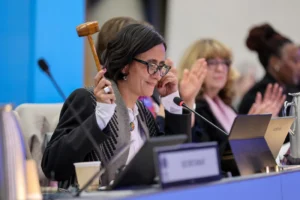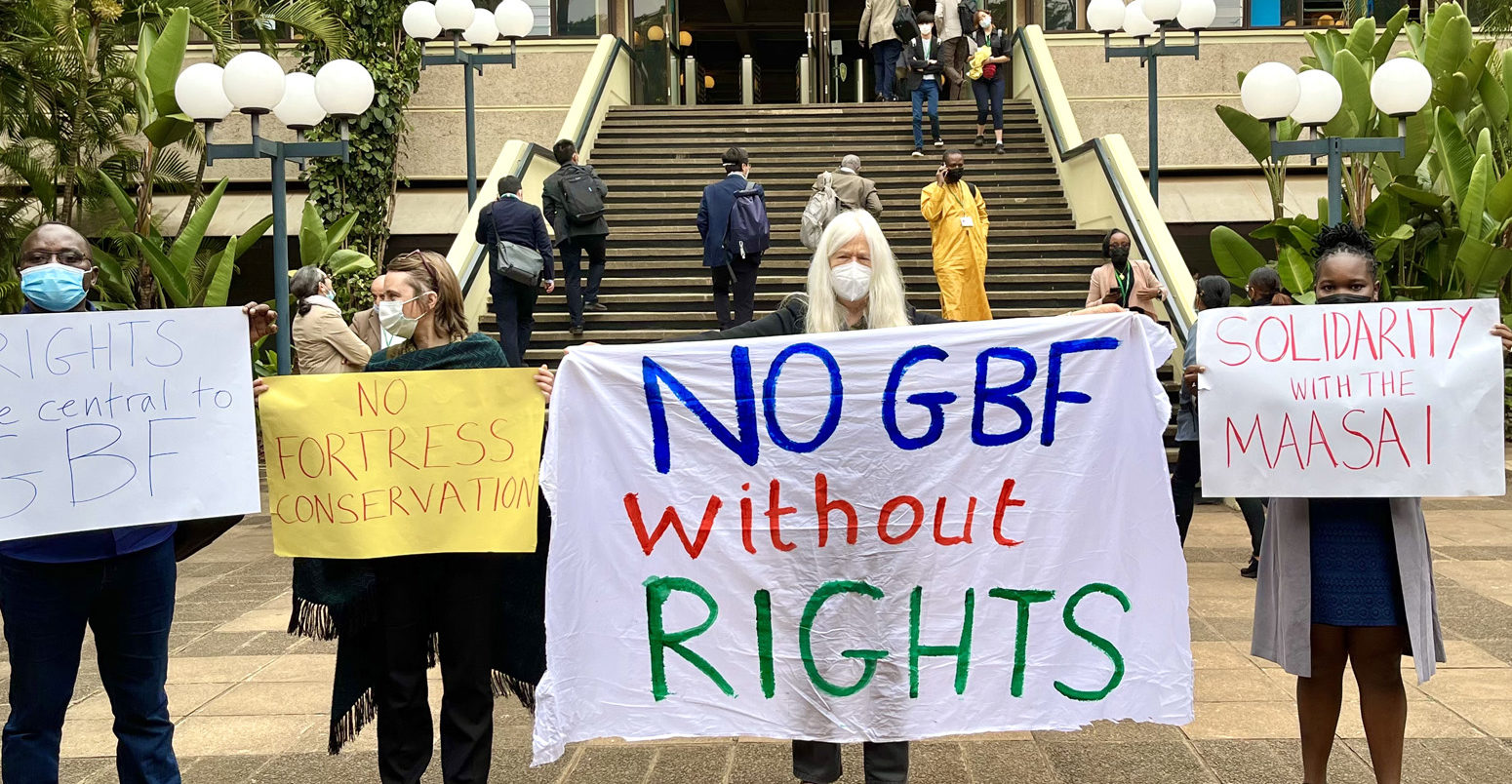
COP15: Key outcomes for nature loss and climate change from UN talks in Nairobi
Aruna Chandrasekhar
06.29.22Aruna Chandrasekhar
29.06.2022 | 11:49amWith time running out for a “Paris-style” deal to reverse nature loss this decade, the UN Convention on Biological Diversity (CBD) convened another set of talks in Nairobi last week.
The week-long Nairobi negotiations followed talks in Geneva in March that concluded with key elements still unresolved. Both sets of preparatory talks were intended to simplify a crucial framework for nature – the post-2020 global biodiversity framework (GBF) – that parties were supposed to sign off on in Kunming, China, later this year.
However, target-setting for issues from protected areas to pesticides saw “more divergence than convergence”, raising concerns for the deal that will now be cemented in Montreal this December, with China continuing as chair of the 15th Conference of Parties (COP15).
Many of the most hotly debated targets are strongly related to climate change, food security and a “nature-positive” economy: keeping carbon-rich ecosystems intact, subsidies for fossil fuels, agriculture and fishing, genetic resources that concern climate-resilient crops and sustainable consumption.
The Nairobi negotiations delivered a few clear wins, including a new target on gender, youth and biodiversity, and unambiguous recognition of the value of ecosystems in cities, such as mangroves and urban parks. It also delivered a date and a final venue for the much-delayed COP15, which will take place just weeks after the COP27 climate talks in Egypt.
However, with only two targets finalised and many issues still not agreed, NGOs warned that the stage is set for a “Copenhagen” moment for nature.
WWF director-general Marco Lambertini described the finale as “groundhog day in Nairobi”, adding that negotiators will need “a step-change in political will, attention and ambition” to salvage “text so divided that it will have no chance to be translated into an agreement at the 11th hour in Montreal”. He also accused Brazil of “consistently blocking progress” on the whole GBF.
Organisers and co-chairs had a more optimistic take, echoed by some party delegates. For example, the co-chairs said approaches adopted in Nairobi helped facilitate more “constructive” and “meaningful” dialogue that helped countries see eye-to-eye and will go towards “establishing common ground” on fraught issues that have plagued other agreements, from finance to equitable benefit-sharing.
Nonetheless, Elizabeth Maruma Mrema, executive director of the CBD, warned in the closing press conference on Sunday evening that “biodiversity is an issue too important to fail”.
Carbon Brief was in Nairobi for the nature talks, speaking to negotiators, scientists, observers and protestors while listening in to the chatter that emerged from closed rooms. Below is a summary of what the talks mean for climate change, biodiversity and food systems.
- What is COP15 and the post-2020 global biodiversity framework?
- Why were the Nairobi talks convened?
- What were the key outcomes of the Nairobi talks?
- What were the key issues and contentions at the Nairobi talks?
- What happens after Nairobi on the road to COP15?
What is COP15 and the post-2020 global biodiversity framework?
As Carbon Brief outlined earlier this year in a detailed Q&A from Geneva, the Convention on Biological Diversity was one of the three environmental conventions that emerged from a landmark Rio “Earth Summit” 30 years ago.
The CBD has been signed onto and ratified by every UN member, except the US.
As with its sister convention on climate change, the CBD is governed by a Conference of the Parties (COP). But, unlike climate COPs, the CBD holds its COPs on even-numbered years, starting in 1996.
The 15th COP (COP15) was originally scheduled to be held in Kunming in China in 2020, but has been delayed by two years because of the Covid-19 pandemic.
Eventually, it was decided that the Kunming COP would be hosted in two parts. The first part of COP15 was conducted part-virtually in October 2021 to “build political momentum”, with China assuming COP15 presidency from Egypt.
While President Xi Jinping himself was unable to preside over the talks in person, he announced that China would take the lead to invest 1.5bn yuan (£183m) to establish the Kunming Biodiversity Fund.
The first part yielded a Kunming Declaration signed by ministers of member countries, containing 17 commitments, including to “enhance collaboration and coordinate actions with ongoing multilateral environmental agreements, such as the United Nations Framework Convention on Climate Change”, among others.
Why were the Nairobi talks convened?
Nairobi was not originally part of the journey to Kunming, but it was added after the first in-person biodiversity meetings in Geneva made little progress.
As fights over tricky issues such as biopiracy and finance extended into the small hours on the last days of talks at the UN’s headquarters, the “glacial pace” meant that a new preparatory meeting was necessary before COP15.
With conference venues reportedly booked out in Montreal, the UN Environment Programme’s chief Ingers Anderson stepped in “in just a day” and offered UNEP’s Nairobi as an alternative venue, according to Maruma. Additionally, Kenya’s e-visa requirements made it easier for developing country delegates to attend the talks “in the only UN headquarters in the global south”.
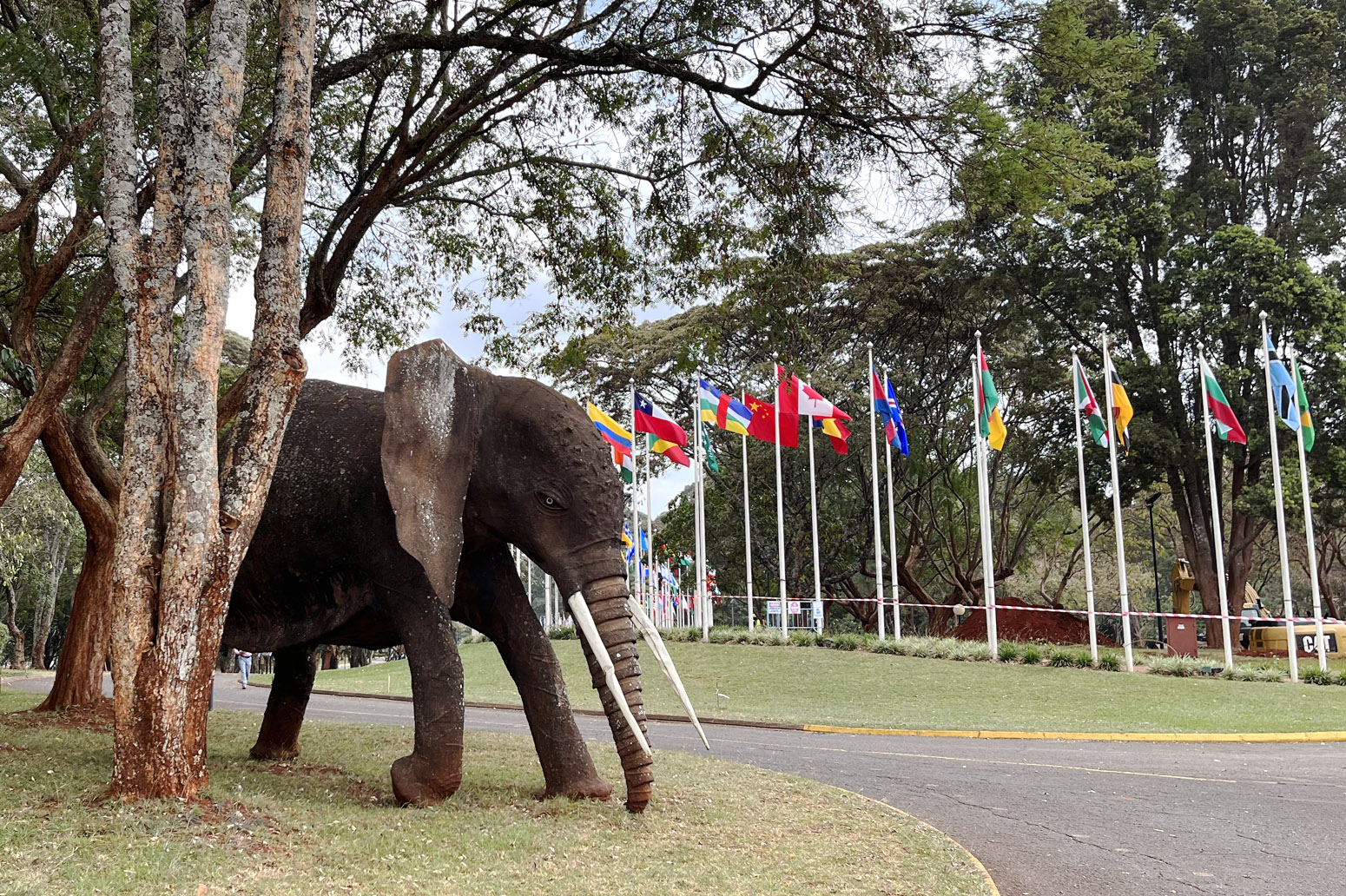
On the penultimate day of the Geneva talks, countries decided they would meet again in Nairobi over 21-26 June, a decision that was formally adopted the next day by the CBD secretariat.
Thus, the Nairobi talks were called to simplify the first draft of the GBF and remove as many remaining issues as possible, signified by square brackets around text.
“We also saw a lot of brackets and alternative text in Geneva. This is the last chance before COP15 [to narrow it down],” said Basile Van Havre and Francis Ogwal who are co-chairs of the Open-ended Working Group that originally drafted the GBF. They added:
“Six days is not a lot of time, parties need to work efficiently to complete all of the work. We plead with parties to not introduce new elements of text, but rather narrow down text in the Geneva draft, with as few square brackets as possible.”
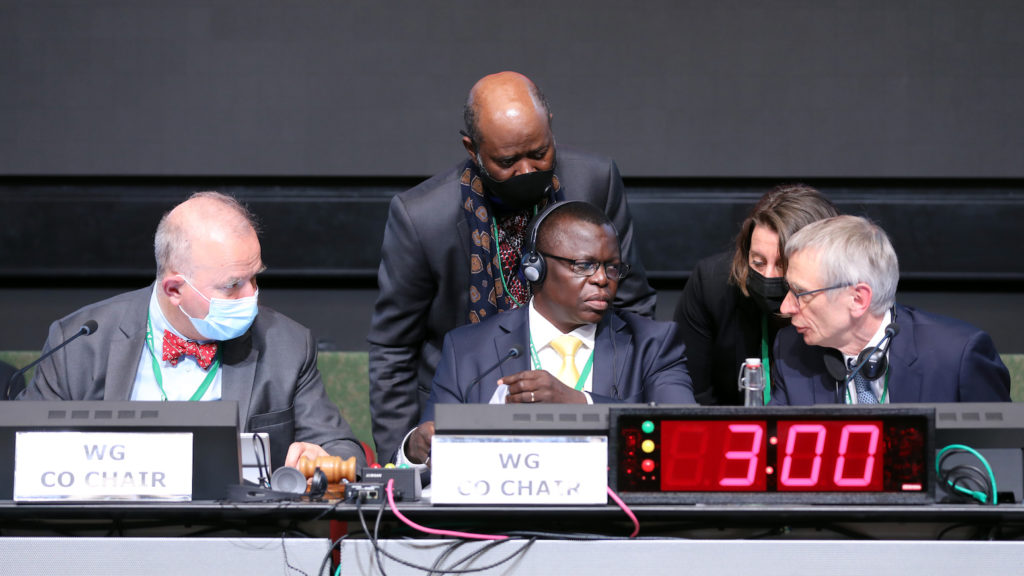
What were the key outcomes of the Nairobi talks?
From Kunming to Montreal
One of the most awaited announcements from Nairobi was when and where the second part of COP15 would be hosted.
News of the COP15 venue change from Kunming to Montreal first broke on Twitter a day before the official acknowledgement.
Done deal: @UNBiodiversity #COP15 to be moved from Kunming 🇨🇳 to Montreal 🇨🇦. Will take place 5 – 17 December. Official announcement tomorrow or Tuesday.
— Patrick Greenfield (@pgreenfielduk) June 19, 2022
Phew!
According to sources that Carbon Brief spoke to, the decision had already been announced in a COP bureau meeting. Canadian party delegates in Nairobi, however, said that it was not yet final, as China and Canada were still ironing out details.
At the opening afternoon plenary of the Nairobi talks, Mrema confirmed the development, careful to point out that the decision was from China: it would remain COP15 president and preside over meetings and the logo would stay the same. The decision arose from “continued uncertainties related to the ongoing global pandemic” and the “urgency of the global biodiversity crisis”, said Mrema. When alternative venues were not available, the “default choice was the seat of the secretariat” – in this case, Montreal.
And it's official, after months of ambiguity + some caginess in calling it the last few days, as 🇨🇳🇨🇦 + CBD Bureau ironed out details.
— Aruna Chandrasekhar (@aruna_sekhar) June 21, 2022
Round 2 of negotiations for this decade's big deal for nature to take place in Montreal, CBD secretariat from Dec 5 to 17, with China as Chair. pic.twitter.com/334LJtRmnZ
The government of China agreed to fund the travel of ministers from least developed countries and small island developing states to Canada to participate in the talks. COP15 president Huang Runqiu said:
“China would like to emphasise its continued strong commitment, as COP president, to work with all parties and stakeholders to ensure the success of the second part of COP15, including the adoption of an effective post-2020 global biodiversity framework, and to promote its delivery throughout its presidency.”
Andrew Deutz of the Nature Conservancy said his organisation was “relieved and thankful” for a “firm date within this calendar year, [since] the global community is already behind in agreeing – let alone implementing – a plan to halt and reverse biodiversity loss by 2030, a plan that people and wildlife desperately need”.
Gender, youth and people with disabilities
The talks in Geneva saw parties adopt a “gender plan of action” to guide countries as they drew up their biodiversity plans for this decade.
However, the Women’s Caucus at the CBD – a network that advocates for more gender equity and inclusive processes in biodiversity – were not content with gender being relegated only to an action plan, brackets or footnotes. With other feminist groups, they pushed for the GBF to include a specific target on gender, which then had 21 targets, as part of a campaign for Target 22.
“Why is it that we are still at a standstill where we need to justify a stand-alone target on gender equality?” asked Mrinalini Rai, director of the Women4Biodiversity network.
By the end of the talks, Target 22 was finally enshrined in the draft of the framework.
The target also includes women and girls with disabilities, while alternative framings of the text also, though in brackets, include youth and persons of diverse gender identities.
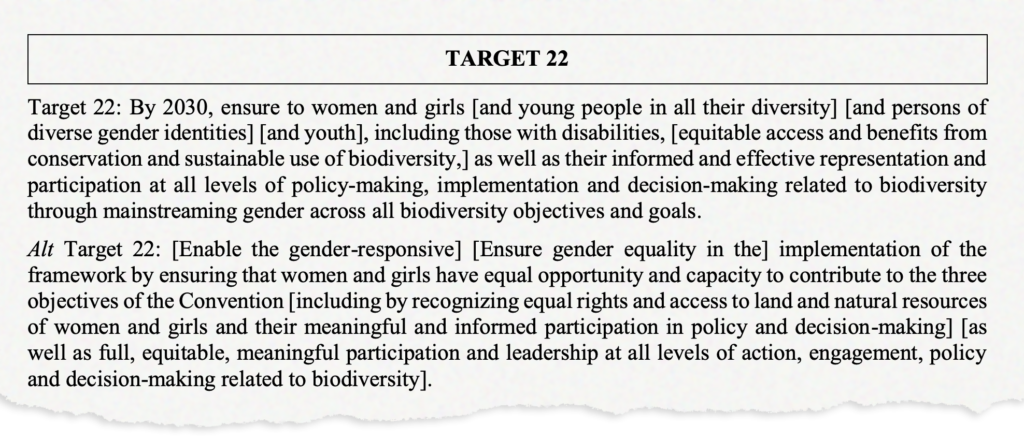
While women and youth groups celebrated in the conference halls with pizza, not all accepted the decision. The Holy See, in a plenary, said that it “does not accept the inclusion of people of diverse genders in the text”, even if it did accept that all life forms needed saving.
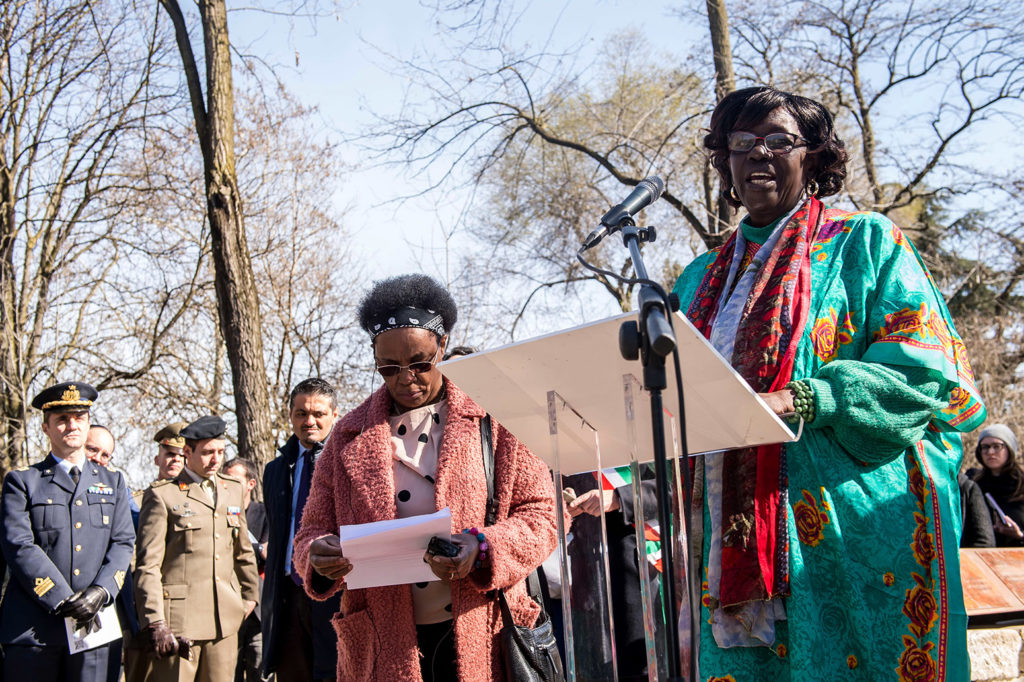
Cities and technology transfer
Of the 21 targets, only two emerged with clean text.
The first was recognising the importance of biodiversity in urban areas – and that countries must significantly increase the area and access to green and blue spaces in cities, while ensuring that urban planning was biodiversity-inclusive.
Target 12 also lists the multiple benefits of having nature thrive in cities: from human health and well-being to ecological connectivity.

This is a target that was echoed by the Intergovernmental Panel on Climate Change (IPCC) in the third instalment of its sixth assessment report, published in April this year. Authors were in high agreement that green and blue infrastructure, such as urban forests and green roofs, can help mitigate climate change, with co-benefits for physical and mental health and better air quality for city-dwellers.
It also agreed that there is robust evidence that “urban parks and open spaces, forests, wetlands, green roofs and engineered stormwater treatment devices” reduce stormwater runoff, surface flooding and contamination of runoff by pollutants.
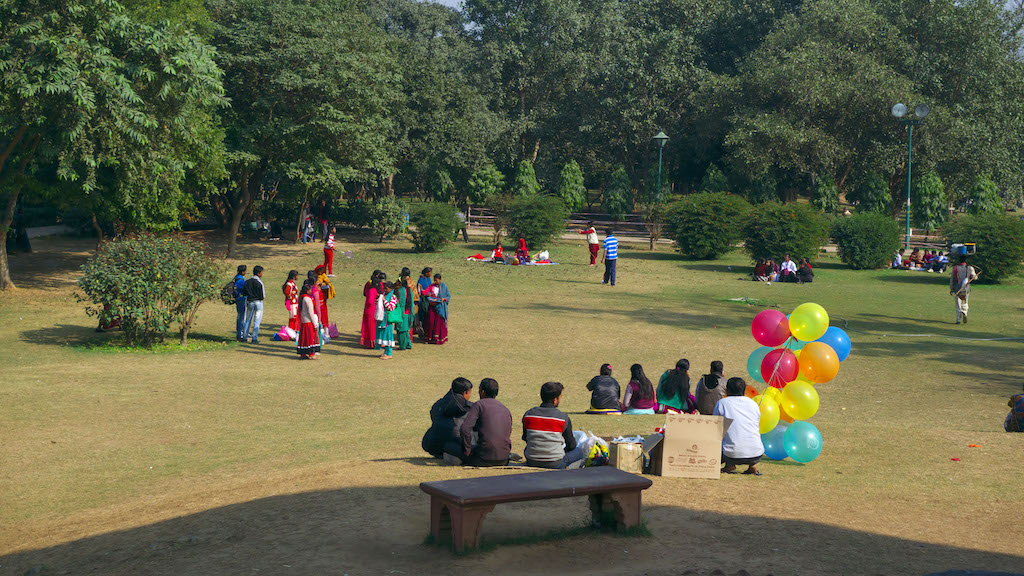
Target 19.2 was another in which clean text emerged. It focuses on scientific research, capacity-building and technology transfer through global cooperation, particularly to help developing countries to meet their needs and access innovation.

The midway point of work on the #post2020 global #biodiversity framework was expected to have achieved much more progress
— Earth Negotiations Bulletin (@IISD_ENB) June 23, 2022
However, Contact Group 4 celebrated, having reached consensus on Target 19.2 on strengthening capacity-building & development
Read➡️ https://t.co/65lA83IJ7Q pic.twitter.com/kNLIIsKFVM
What were the key issues and contentions at the Nairobi talks?
Protecting intact ecosystems
The IPCC’s recent report emphasised the importance of the world’s terrestrial ecosystems as a carbon sink. It concluded, with medium confidence, that they absorbed around a third of all human-caused CO2 emissions between 2010 and 2019, in spite of land-use change.
Global studies suggest that the protection and restoration of forests, peatlands, coastal wetlands, savannahs and grasslands have the potential to cut emissions by a mean of 7.3bn tonnes of CO2 equivalent (GtCO2e) per year from 2020 to 2050, the report said.
In the current draft of the GBF, one framing of the text in Target 8 points to strengthening “ecosystem resilience” to climate change, “including through nature-based solutions and other ecosystem-based approaches”, with a focus on conserving and restoring high-carbon ecosystems. The target envisions that biodiversity and ecosystems could contribute, by 2030, “to at least 10GtCO2e per year to global mitigation efforts”.
According to the scientists from the Intergovernmental Science-Policy Platform on Biodiversity and Ecosystem Services (IPBES), setting an “ecosystem-based mitigation target in the GBF would be an important complement to goals” in the United Nations Framework Convention on Climate Change (UNFCCC), because it more explicitly stipulates safeguards for biodiversity.
However, they warn that adverse impacts on biodiversity from adaptation measures, such as dams, seawalls and new irrigation, should be avoided, while mitigation means must be designed to avoid adverse impacts on nature and people, “emphasising equity and social justice”. Prof Paul Leadley, IPCC lead author and one of the scientists credited with the establishment of IPBES, said:
“A 5GtCO2e is ambitious and strongly supported by the science, but 10 is very ambitious and top of range, achievable with rapid transformative change in food systems, and is broadly consistent with a 5% net gain in natural ecosystems by 2030.”
While they were personally not overly concerned with debates between nature-based solutions (NBS) and ecosystem-based approaches – covered in an earlier Carbon Brief explainer – they suggested “clear definitions” to avoid “perverse effects”, with the focus on “measures that provide ‘wins’ for climate, biodiversity and human well-being”.
Parties, however, could not agree. The Democratic Republic of Congo wanted both approaches to be distinctly separate, while Bolivia asked that “Mother Earth, right-based approaches and Mother Earth-centric actions” be inserted after NBS, arguing that these approaches were “anthropocentric” and not ecocentric.
Some versions of Target 8 contain both approaches, with NBS defined by a UN Environment Assembly resolution in March this year. Other alternative text mentions only ecosystem-based approaches.
Indigenous groups, however, were still deeply concerned about area-based targets in the framework and feared that their Free Prior Informed Consent (FPIC) would be relegated to guidance text, instead of in the GBF’s targets. The International Indigenous Forum on Biodiversity (IIFB) were the first at the talks to condemn forced evictions of the Maasai in neighbouring Tanzania, which they called an“example of gross violations of Indigenous Peoples rights in pursuit of profits and in the name of conservation [which] is at the core of ongoing GBF negotiations”.
At a press conference, Maasai elders delivered the following statement:
“Our resistance has always been based on the fact that we are more capable of taking care of our lands than any other person.
“We are not against conservation, but we see and conceptualise it from a different perspective. We have never been given a space to share our perspective, instead, we have been categorised as enemies – people who should not be consulted.”
Jennifer “Jing” Corpuz, a Kankana-ey Igorot from the Philippines, told Carbon Brief that Indigenous groups were asking for indicators of good biodiversity health to include indicators on land tenure, effective participation and indigenous languages. She said:
“We’re in a good space with other targets. But we are concerned about area-based targets and FPIC. 40% of protected areas are in Indigenous areas. There’s nothing in the text on defenders. It’s not just the killings but also the criminalisation. What we’re proposing is access to justice and human rights defenders. We want it in the target, because it’s stronger. With digital sequencing information, you disconnect the resources from the community, and no benefits are going back to the community. It’s good that there’s recognition that benefits should go to us, but it will take a lot of steps.”
Finance for forests and marine ecosystems
One of the most closely-watched and debated targets was finance for nature and biodiversity contained within Target 19 of the framework. It has two parts: one (19.1) dealing with financial flows, and two (19.2), to spur scientific cooperation, research technology transfer and capacity-building.
Closing the biodiversity finance gap would require “at least $700bn, including a reduction of $500bn in harmful subsidies and $200bn a year dedicated to conservation, though countries raising 1% of GDP by 2030”, said one version of the target. In order to do so, countries would need to mobilise resources from “all sources” – including domestic sources and private finance. But it would also necessitate “new and additional sources of finance” for vulnerable and developing countries.
While countries broadly agreed there was a need to increase financial flows to developing, biodiversity-rich countries, disputes arose over whether this would be from all sources or from international public finance from the developed world. Numbers for these nature-positive financial flows from global north to south range from $10bn to $100bn a year until 2030 and are yet to be decided.
Brazil – supported by like-minded countries including Argentina, Bolivia, Ecuador, Venezuela, Egypt, Liberia and Guatemala – had put forward a proposal to set up a “global biodiversity fund” by next year, to be made operational by 2025.
It called for developed country parties to “provide new and additional financial resources of at least $100bn annually until 2030” so that developing countries could implement their 2030 biodiversity plans, an amount that would be revisited in the 2030-50 period.
Brazil’s plea on Thursday evening was for this fund to have the “same element of ambition in the UNFCCC”, separate and distinct from climate funding, as well as official development assistance.
Japan, meanwhile, asked that this finance be mobilised from all sources, with no explicit financial target.
In a stocktake on Friday, Switzerland commented that CBDR – (common but differentiated responsibility) – “does not belong in the CBD [and it] does not support any conditionality in finance”, views echoed by Norway and the UK.
William Lockhart – joint head of international environment negotiations at the UK’s Department for Environment, Food and Rural Affairs – said that the UK “recognised the obligation on us and on all parties…that is why we’ve committed to spend $3.7bn on nature internationally and that is why as COP26 presidents we’ve worked hard to secure commitments totalling as much $12bn on deforestation and land-use change”. Lockhart added – “in the spirit of honesty and realism” – that the $100bn target in the framework “is not a public finance target”.
Lim Li Ching of Third World Network countered that “it’s true that the term CBDR is not explicitly mentioned in the biodiversity convention, but it is covered by Articles 20 and 21 around financial resources and mechanisms”, adding that the argument was “just a tactic to avoid responsibility”.
South Africa expressed its support for Brazil’s proposal for a global biodiversity fund, while Bolivia called for “cancellation and multilateral restructuring of debt” for countries to meet their biodiversity targets. Iran, meanwhile, stressed repeatedly that funds for biodiversity must be made available irrespective of sanctions and political conflicts.
When disagreements on 19.1 reached a head, even smaller negotiating groups were convened by the co-leads, who were called “friends of the co-leads”. This group attempted to broker consensus, producing two “non-papers” – so-called because they are unofficial and have no official seal or letterhead – on the state of play. Sessions extended late – even into Saturday morning – with parties eventually conceding that they would not arrive at a bottom line number in Nairobi and so postponed the discussion until Montreal. Eventually, the draft text on finance included all possible language, with each dissenting party’s terms and numbers of choice on paper in brackets.
One negotiator from a central African nation described these sessions as “group therapy” and, unlike Geneva, where groups simply stated their positions, the approaches in Nairobi helped parties understand each other better, which would go a long way in a final deal.
Meanwhile, Indigenous coalition groups wanted to ensure they were included in text around finance. They called for “an open, fair and equitable mechanism of direct access to funding that ensures these resources actually directly reach Indigenous peoples and local communities” in both developing and developed countries.
In its final statement, New Zealand on behalf of the “JUSSSCANZ” group of countries (Japan, US, Switzerland, Australia, Canada and New Zealand) opposed the proposal for a global biodiversity fund, saying that “a new fund does not mean new funding”.
The term CBDR features four times, but in brackets, in the final draft text out of Nairobi.
Subsidies
Another key contention was the subject of subsidies that harm biodiversity, contained in Target 18:
“Redirect, repurpose, reform or eliminate incentives harmful for biodiversity, in a just and equitable way, reducing them by at least US$500bn per year, including all of the most harmful subsidies, and ensure that incentives, including public and private economic and regulatory incentives, are either positive or neutral for biodiversity.”
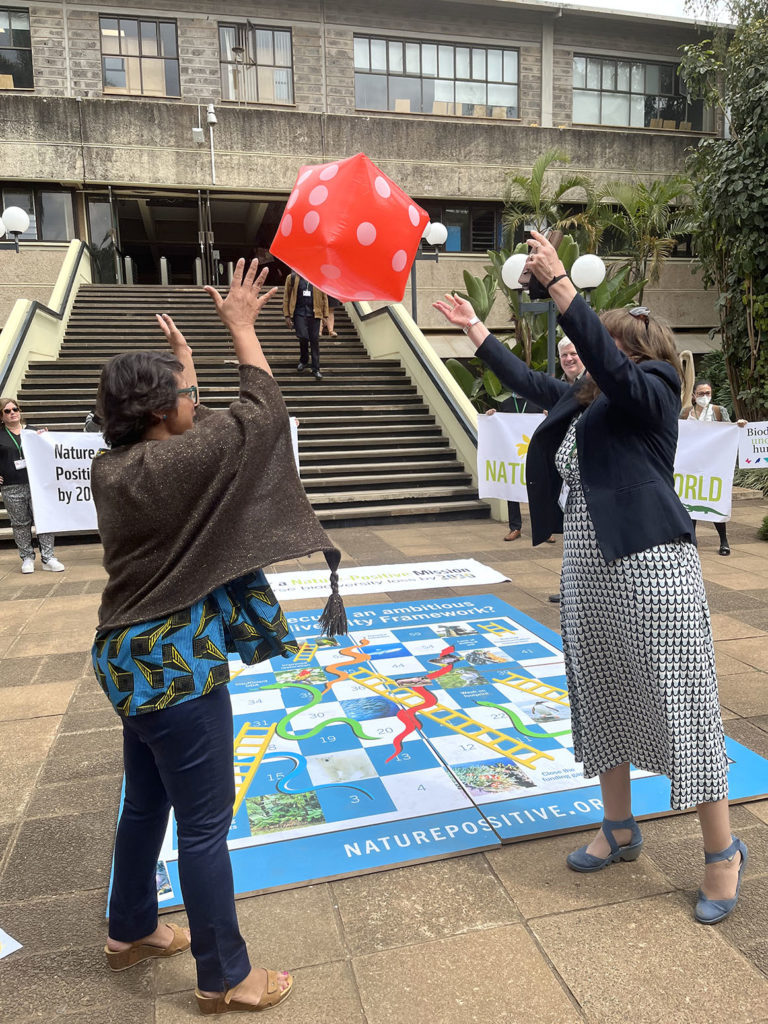
In Geneva, countries developed options to this text that included references specifically to agricultural and fishing subsidies. In Nairobi, many countries – including Japan – wanted these references removed, saying that it was “not appropriate to single out two sectors”, even as the World Trade Organisation arrived at a historic agreement 21 years in the making to curb fisheries subsidies. Reference to the WTO rules were deleted, with a compromise that the target should refer to “other relevant international obligations”.
At the start of the talks, Germany said that G7 countries had already committed to “identifying and redirecting or eliminating subsidies harmful to biodiversity by 2030”.
Meanwhile, an Indian environment ministry official attending the negotiation online wanted to delete the term “eliminate”, and replace it with the word “rationalise”, to the surprise of many.
Carbon Brief spoke to Dr Vinod B Mathur who heads India’s National Biodiversity Authority and was India’s only in-person representative at the conference. Defending the country’s rationale, Mathur referred to an example of cooking gas subsidies given to villagers to dissuade them from cutting down forest. He said:
“There are several words being floated around: regulate, repurpose, reform. India’s objection is with the word ‘eliminate’. There is a socioeconomic element to a subsidy. If you say the word ‘perverse’ subsidy, then I’m with you.”
Some countries wanted references to the $500bn financial target for a subsidy phase-out to be removed, a move that host Kenya objected to, with one delegate saying:
“This is a subset of $700bn for biodiversity. With more sustainable production on the planet, we will have more money for nature. How will [the GBF] work if this is lower than what is possible? $500bn is possible.”
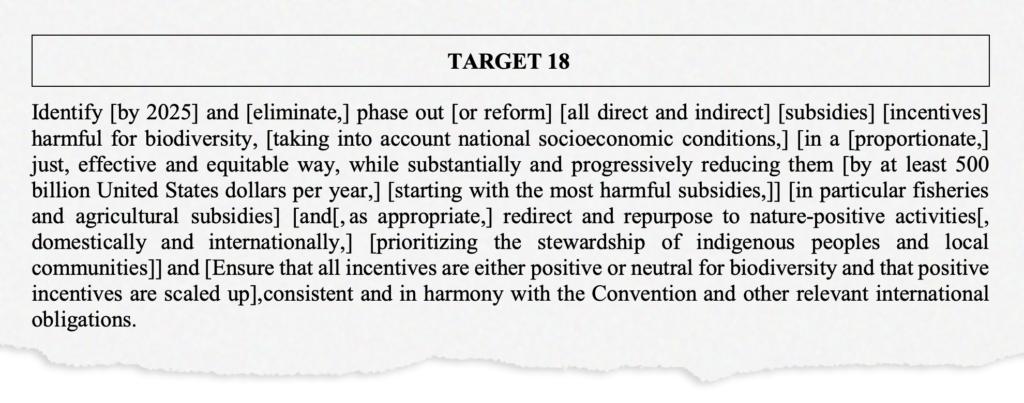
Agricultural pollution, pesticides and sustainable production
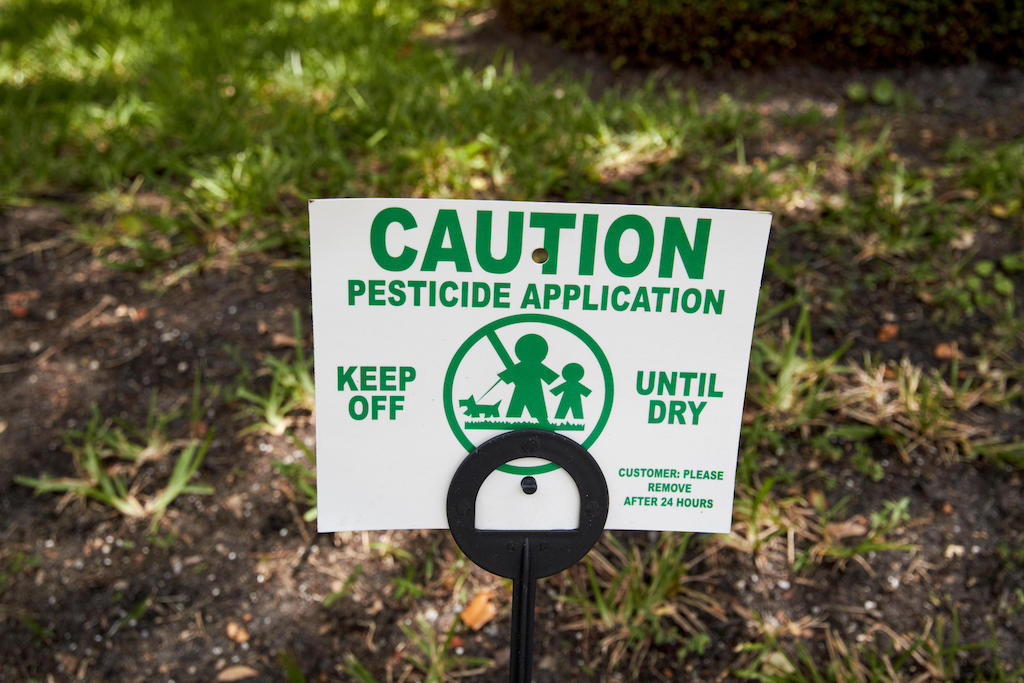
Fertilisers and pesticides derived from fossil fuels, which then contribute to climate change, are also among the biggest drivers of biodiversity loss, according to scientists.
Debates around drastically cutting down on agricultural input use by 2030 – by half for nutrients and by two-thirds for pesticides – faced objections from countries, especially in the face of food and fertiliser shortages that have gripped the world, following the war in Ukraine.
“We’re not doing this just for biodiversity, but health, people and climate change,” said Prof Paul Leadley and Prof David Obura of IPBES, adding:
“We cannot by 2030 reduce pollutants to levels by which they won’t have an impact on biodiversity. The targets are not based on zero – you’re not going to get to zero – but based on the maximum you can do to get there.”
They cautioned that quantitative targets “don’t work well if they’re just translated to national targets, but national contexts” and suggested that wording and headline indicators use “pesticide risk” instead of quantity of use per hectare, “because very toxic pesticides can pose high risks to species even if used in small quantities”.
According to the two professors, nutrient losses from agriculture can be reduced by up to 50% at local, national and global scales by 2030 and pesticide risk reduced by 20-50% without compromising food security. This could be achieved using existing farm-level practices and technologies, “systemic changes and innovation in agriculture and food systems would allow considerably larger reductions”, they said.
The International Fertiliser Association (IFA), in its submission, stated that cutting nutrient losses by “over 50% is an unrealistic goal, even for regions with advanced agricultural practices” and encouraged parties “to remove a specific quantitative value for nutrient losses in the target”.
While there was some momentum on curbing hydrocarbon-derived plastics – especially following a March UN Environment Assembly resolution on ending plastic pollution – this progress was also derailed.
Parties wanted to include other pollutants in the target. The EU, for example, wanted to include light and noise pollution as harmful to biodiversity. Togo, meanwhile, wanted mercury and heavy metals added to the text – significant especially in context of mercury emitted from smokestacks of coal-fired power plants and heavy metals in their ash.
In the end, text on Target 7 grew longer and “unfortunately the contact group was unable to agree on targets”, the co-leads confessed. But delegates noted “the need to ensure that headline indicators will be adequately addressed”, the IISD’s Earth Negotiations Bulletin reported, particularly with inputs from an expert workshop on the GBF’s monitoring framework to be held in Bonn from 29 June to 1 July, 2022.
What happens after Nairobi on the road to COP15?
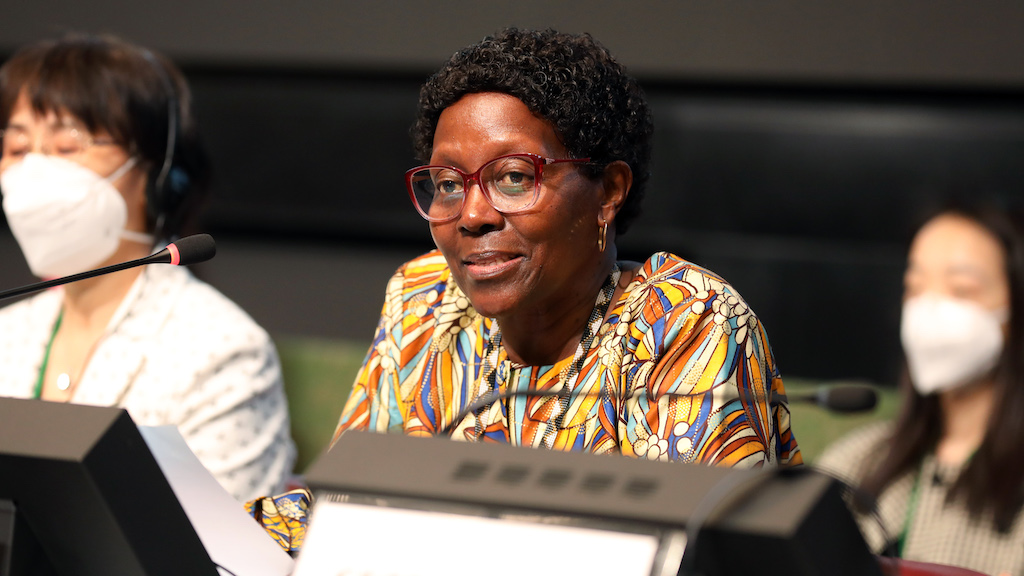
“I call upon the Parties, in the next months, to vigorously engage with the text, to listen to each other and seek consensus, and to prepare the final text for adoption at COP15,” said CDB executive director Elizabeth Maruma Mrema at the closing press briefing, alluding to a process that will be developed to advance discussions before COP15.
In response to media questions at the briefing, Mrema and the co-chairs confirmed that there would be a fifth working group meeting on the GBF after Nairobi. She said:
“Before that, the co-chairs are going to develop that roadmap between now to the fifth meeting, so clearly, in between negotiations, consultations will continue. Even bilaterals among the stakeholders themselves will continue throughout, as part of already beginning to see where compromises can be and as a way also to better understand why there are differences so the negotiation process.”
Francis Ogwal, co-chair of the working group from Uganda, confirmed that the fifth working group meeting would be “just on the periphery, back-to-back with the COP” in Montreal, so likely a few days ahead.
Not everyone was happy as the organisers and the co-chairs with the outcomes. Palau, speaking on behalf of Pacific small island developing states said:
“We worry that we are trying to encompass everything all at once resulting in a GBF with targets that are complex and hard to implement. In seeking clarity, we have made them increasingly complex and difficult to understand, thus making us question whether the GBF can then have the significant results within the eight years that it would be implemented. Eight years may seem like a long time for implementing the framework, but for Pacific SIDS, eight years may be the only opportunity we have for ensuring our survival.”
This article was produced as part of Internews' Earth Journalism Network's 2022 UN CBD COP15 Reporting Fellowship.
-
COP15: Key outcomes for nature loss and climate change from UN talks in Nairobi
-
What happened at the UN nature talks in Nairobi?





